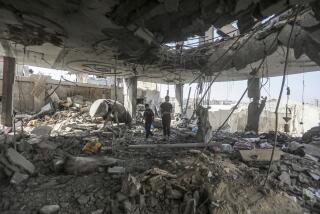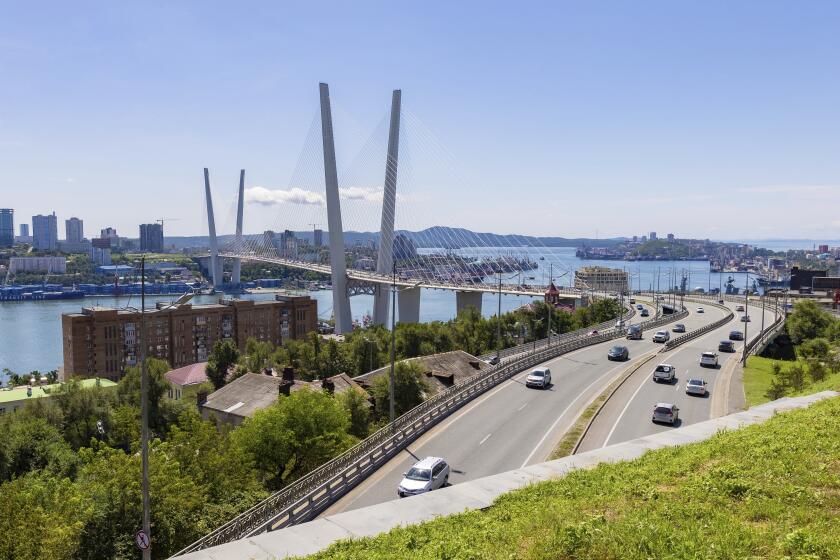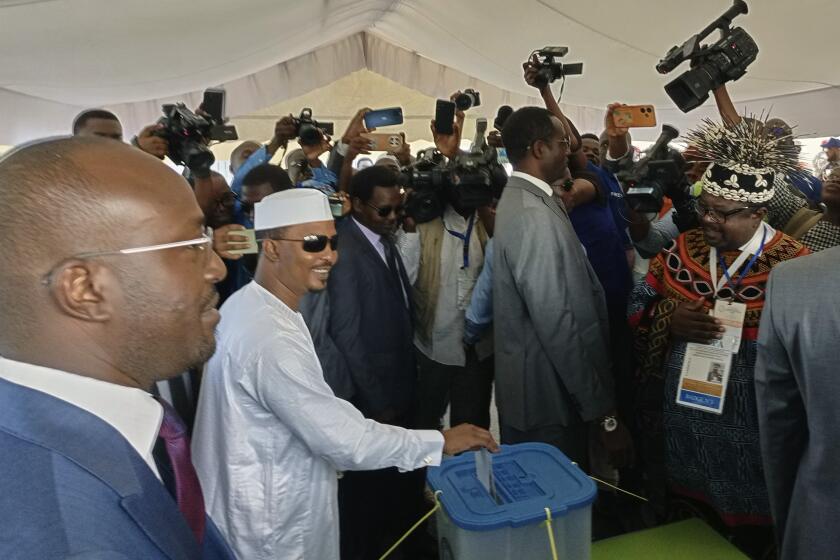Egyptian Monks Find Serenity in Mojave Desert
Six Egyptian monks of the Coptic Orthodox Church pray, work and meditate near the shores of this Mojave Desert dry lake 25 miles northeast of Barstow.
“We are here in this remote place because it is far away from worldly distractions, in a location remarkably similar to the church’s 10 monasteries in the deserts of Egypt,” explained Father Benjamin, 38, one of the monks at St. Antony Monastery.
A five-mile dirt road leads to the monastery named after the Coptic monk who spent 58 years living a solitary life in a desert cave in Egypt. St. Antony, who lived in the 3rd and 4th centuries, is considered by some to be Christendom’s first monk.
The Coptic Orthodox Church traces its origin to Mark, reputed to be the author of the second Gospel. Although Western biblical scholars say Mark’s historical identity is uncertain, the Coptic church regards Pope Shenouda III, 67, as the church’s 117th Pope since St. Mark.
Atif Guirguis was the first monk in this seldom-visited spot.
He had come to this country from Egypt to earn his master’s degree in engineering at Caltech. After graduating, he worked as an engineer in Southern California until 1977. He then gave up the secular life and became a hermit, dedicating himself to God. He was ordained a Coptic Orthodox monk, took the name Brother Atif and built a shack where the monastery is now located. For three years he lived a solitary life like St. Antony, praying and meditating.
Guirguis returned to Egypt, where he eventually became a bishop; he now manages the church’s publishing house in Cairo.
The monastery lay unused from Brother Atif’s departure until 1988, when the present chapel and monks’ quarters were built. Last year the six monks came from Egypt and moved in.
The only other Coptic monastery outside Egypt is in Germany. During Pope Shenouda’s visit to California last November he dedicated St. Antony Monastery.
Southern California has 10 Coptic churches with about 10,000 followers, the largest concentration of Coptics in this country other than New York City, according to Father Antonious Henein, 46, pastor of Los Angeles’ Holy Virgin Mary Coptic Orthodox Church.
The first Coptic church in Southern California, St. Mark in West Los Angeles, was consecrated in 1969. Most members of the Coptic churches in the United States are Egyptian immigrants.
There are 8 million members of the Coptic Orthodox Church in Egypt, the largest Christian church in the Middle East.
Refaat Bakhoum, 55, a contractor from Rancho Palos Verdes, suggested that the church buy the land the monastery sits upon.
“I have a friend who owned land really off the beaten path in the Barstow area,” Bakhoum said. “To me it was a spiritual place like the monasteries in Egypt. I told the church about it. My friend sold the church 20 acres to be set aside for the first Coptic monastery in America.”
That was 15 years ago. Since then the Coptic church has acquired 140 acres of adjacent desert.
“We are now busy planting trees around the border of our property. There is ample water here, and we will plant much of our land in vegetables, fruit and pistachio trees for our own use and to sell to the public to help support the monastery,” Father Benjamin said.
He said plans are for St. Antony Monastery eventually to house 100 to 150 monks, “most coming from Egypt, but in time we expect Coptics living in America will choose the monastic life as well.” There are 10,000 monks in Egypt.
Each monk has his own room, where he spends hours in prayer and meditation. “We pray for everyone, for peace in the world,” said Brother Malak, 28.
The Coptic church split from the Roman Catholic church in 451. In 1973, Pope Shenouda met with Pope Paul VI at the Vatican in the first meeting between leaders of the two churches since the 5th Century. The two Popes signed a declaration affirming that their faiths are essentially one.
“Here we are halfway around the world from our homes in Egypt. Yet being in this out-of-the-way place in a desert so much like the Egyptian desert, we feel like we never left home,” Brother Malak said. “It is God’s will that we are here.”
More to Read
Start your day right
Sign up for Essential California for news, features and recommendations from the L.A. Times and beyond in your inbox six days a week.
You may occasionally receive promotional content from the Los Angeles Times.






